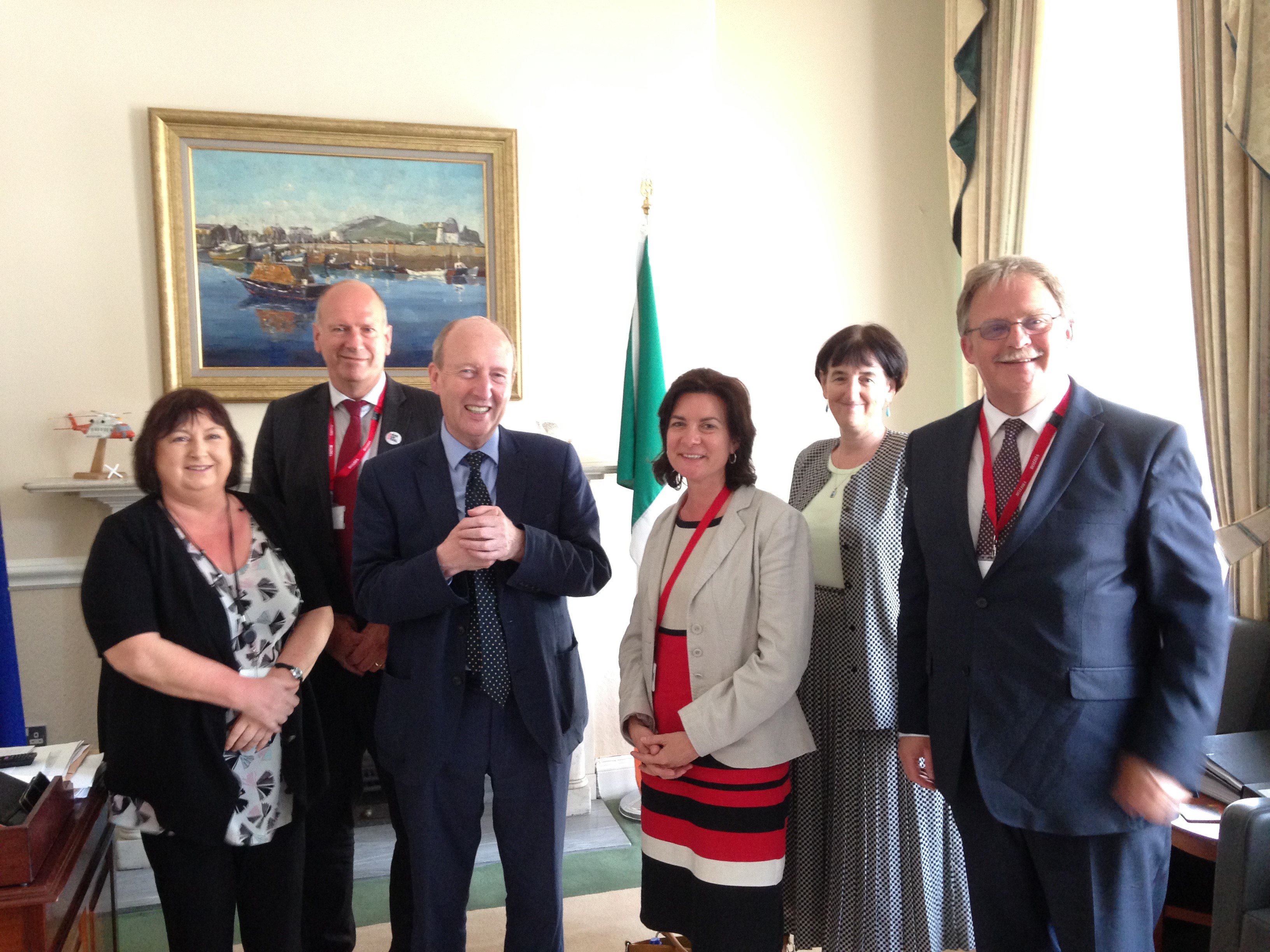Three Members of the External Affairs and Additional Legislation Committee, Mark Isherwood, Eluned Morgan and Committee Chair David Rees, visited Dublin on Monday 19 June. The reason? To get some Irish perspectives to feed into the Committee’s inquiry into the implications of Brexit for Welsh ports.
The goal of the inquiry is to provide some answers two questions:
- What risks and opportunities does Brexit present for Welsh ports?
- What steps should be taken, and by whom, to mitigate any risks and secure any benefits?
 The visit followed evidence taken in Cardiff Bay on 12 June from Cardiff Business School, freight sector trade bodies and Welsh ports and ferry operators.
The visit followed evidence taken in Cardiff Bay on 12 June from Cardiff Business School, freight sector trade bodies and Welsh ports and ferry operators.
The Committee used what it has learnt to date when taking evidence from Ken Skates, the Cabinet Secretary for Economy and Infrastructure on Monday 3 July – the final session planned in the inquiry.
Why ports and why Ireland?
The importance of ports to the Welsh economy is pretty clear. A 2011 study by DTZ, commissioned by the Welsh Government, estimated that Welsh ports directly supported 18,400 jobs. A 2014 study by Arup, commissioned by Associated British Ports, suggested that ABP’s five south Wales ports contributed £1.4bn per year to the UK economy, including nearly £1 bn within Wales, and supported 15,000 Welsh jobs. Three of the eight Welsh Government Enterprise Zones (Anglesey, Haven Waterway, and Port Talbot Waterfront) contain ports, reflecting their economic importance.
Maritime traffic between Ireland and Wales is significant and the so-called “UK landbridge” between Ireland and continental Europe is crucial for Irish trade. A Welsh Government statistical release shows that, in 2015, 72% of HGV traffic between the Republic of Ireland and continental Europe passed through Welsh ports. Also, while ferry passenger numbers have declined since their peak in 1998, more than 2.6m passengers travelled from Irish ports to Holyhead, Fishguard and Milford Haven in 2015.
Who did they meet in Dublin?
The Committee Members had a packed day in Dublin, leaving Cardiff Airport on a 7am flight and returning that night around 10pm. The first meeting was with Irish Government Minister Shane Ross TD, and his officials, at the Department of Transport, Tourism and Sport (pictured above). Minister Ross has responsibility for Ireland’s largely publicly owned ports. This was followed by a short walk to Merrion Square to meet representatives of the Irish Exporters Association, including Howard Knott the IEA’s Trade Facilitation Ireland Director, where Members explored the views and plans of Irish exporters.
There was no break for lunch as it was over to the Houses of the Oireachtas for a sandwich with Senator Neale Richmond, Chair of the Irish Senate’s Special Select Committee on the Withdrawal of the UK from the European Union and member of the Joint Committee on European Union Affairs. The remit here went beyond ports alone, as the Senator’s Select Committee is finalising what will be a substantial report setting out potential solutions to the significant issues Brexit presents to Ireland.
The afternoon began with a meeting with Liam Lacey, Director of the Irish Maritime Development Office. The IMDO’s role includes supporting and marketing the shipping sector, and advising the Transport Minister on port and shipping issues. The final meeting of the day was with officials working on Brexit and EU policy at the Irish Department of Foreign Affairs and Trade. Again, the remit of this session extended beyond ports. The discussion covered Ireland’s preparations for Brexit, what it means for the country, areas of common interest, as well as the negotiation process and the Irish take on the views of the other Member States in the EU27 that will face the UK across the negotiating table.
What were the takeaway messages for Welsh ports?
Discussions throughout the day covered a lot of ground. However, some key issues discussed included:
- What Brexit means for Ireland and how Ireland’s government and businesses are preparing;
- The importance of Wales engaging with the Irish Government and stakeholders, as well as those from other Member States;
- The implications of customs and other border checks for the economy, as well as ports and their customers if, as is expected, the UK leaves the EU Customs Union. This included considering whether Welsh and Irish ports have the physical capacity to accommodate checks;
- The risks for Wales if a “soft” north-south Irish land border emerges, but a “hard” east-west border with Britain is introduced;
- Whether there is a risk that port traffic might divert to other British ports, or even direct to ports in continental Europe, if there is significant “friction” at the Ireland-Wales maritime border;
- What Brexit means for the future of the EU Trans-European Transport (TEN-T) Network of key transport links and infrastructure; and
- What Brexit means for the Common Travel Area (CTA), the special travel zone between the UK, the Republic of Ireland, the Isle of Man and the Channel Islands that allows for free movement of people, and whether Brexit might lead Ireland to join the Schengen Area.
All in all it was a busy but productive day, and the Committee would like to thank all those they met and others in Ireland who helped with the arrangements for the trip. The Members who attended are preparing a short report on what they found for their Committee colleagues which, with the wider evidence they have heard and read, will form the basis of their report.
Article by Andrew Minnis, National Assembly for Wales Research Service Image from the Assembly Commission
This post is also available as a print-friendly PDF: In Dublin’s Fair City – External Affairs Committee visits Ireland to ask what Brexit means for Welsh ports. (PDF, 198KB)






